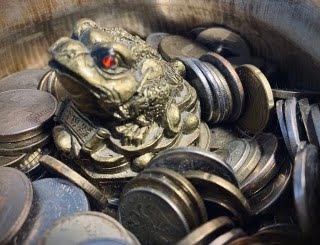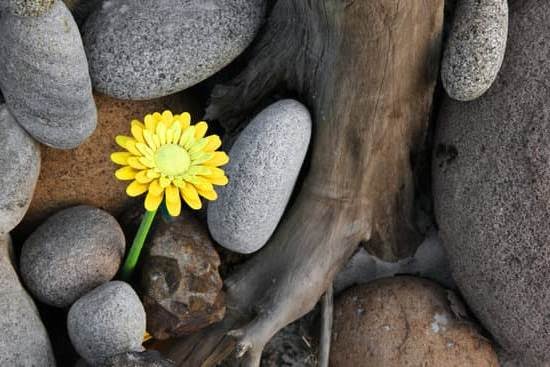Introduction
Feng Shui is an ancient Chinese system of creating harmony in a home. Based on the belief that a balance between the environment and its occupants can bring prosperity, Feng Shui has become one of the most popular ways to create harmony within a home. For hundreds of years, this ancient practice has been used to arrange furniture, colors, and layout of a house so as to maximize positive energy flow.
In addition to arranging furniture and colors, Feng Shui also suggests certain seasonal remedies for improving your home. Popular tips include keeping your windows clean from dirt and dust during the springtime to allow for nourishing energies or placing crystals in specific locations during the different seasons to maintain balance. Opening up space can help reflect light and activate energy points throughout the room as well. An area that contains clutter or is cramped impedes good luck and energizes stagnant areas. It is also suggested that air purifying plants be kept within each room as they are believed to absorb negative energies while bringing in freshness. Lastly, art featuring natural elements such as oceans or mountains helps promote healthful influences while infusing life into surroundings. Incorporating small items like jar candles can also help fill up spaces with natural scent & soft light while still remaining peaceful without too much distraction.
Best Practices
Feng Shui is an ancient Chinese practice that focuses on creating a positive living space through the placement and arrangement of objects around the home. There are various “rules” associated with Feng Shui which, when applied properly to your living space, can create balance and harmony. Here are a few Feng Shui tips you should be aware of when designing or making changes to your space:
• Place furniture in the four corners of the room – This promotes energy movement and prevents stagnation.
• Keep pathways clear – This helps ensure smooth transition of energy throughout your home, allowing it to flow freely through all areas.
• Make sure rooms have adequate lighting – Lighting brings life into any space and encourages a vibrant, energized atmosphere.
• Avoid clutter – Clutter blocks the flow of energy which can be draining to live in; keep only items that bring positive energy into your home.
• Hang art that speaks to you – Art reflects our individual personality, so hang pieces that evoke emotion for a more personalized feel.
• Utilize natural elements such as plants, crystals, fire and metal – Natural elements are beneficial for their ability to absorb negative energies while promoting balance and harmony throughout the home.
Through applying these guidelines within your environment, you can enjoy improved health, increased abundance and greater vitality!
The Five Elements of Feng Shui
The five elements of Feng Shui are Wood, Fire, Earth, Metal, and Water. Here is a brief overview of each element and how they can be incorporated into your home:
Wood Symbolizes growth, renewal, movement, and energy in Feng Shui. Incorporate wood furniture and accessories throughout your home to bring warmth and vitality to the space.
Fire Symbolizes intensity and passion in Feng Shui. Flickering fireplaces create a cozy atmosphere for reflection and relaxation. Candles or wall sconces brighten up dark corners and give off a beautiful golden light for romantic evening moments.
Earth Symbolizes nurturance and stability in Feng Shui. Bringing nature such as potted plants into your home can help make calm and peaceful spaces. Earth tones like browns or beiges bring a grounding force to any room.
Metal Symbolizes efficiency, organization, and strength in Feng Shui. Aluminum sculptures adorned with curves or sharp edges can draw positive energy into the space while stringed lights hung along windowsills provide metallic accents without overdoing it on industrial interior design staples like stainless steel fixtures.
Water Symbolizes prosperity and clarity in Feng Shui. Placing an aquarium near an entryway creates an inviting atmosphere which promotes new beginnings while running fountains spread tranquility throughout the house—excellent for promoting healthy Zen vibes in any setting!
Space Clearing
Space clearing is a crucial step when following Feng Shui principles. To begin, start by walking around your space and paying extra attention to any areas you feel less inspired in or that are overcrowded—these are the areas where stagnant energy is most likely to accumulate. Begin by purifying the air with a cleansing smudge stick like sage, palo santo, copal or cedar. Then, instead of storing items in energetic out-of-sight spaces such as cabinets and closets (where energy tends to get stuck), display objects that bring you positive energy such as photographs and candles anywhere you can see them. Place special attention on mirrors as they can amplify energetically what they reflect so make sure they are facing away from anything unsightly. Finally, let natural light into these spaces to inspire growth and renewal.
Creating Harmonious Spatial Arrangements
The principles of Feng Shui revolve around creating a tranquil, balanced atmosphere. In order to accomplish this, there are several steps you can take to optimize the energy in your home.
Begin by de-cluttering to reduce excessive energies and create an open space that allows life force – or chi – to move freely throughout the home. Whenever possible, choose items with a neutral design and subdued colors as vibrant hues can be too stimulating and overwhelming.
It’s also important to pay attention to the placement of furniture and other objects. Allowing for a harmonious flow of energy is essential for reducing stress and promoting relaxation. Be mindful of where you install mirrors – which should reflect something beautiful, you don’t want them reflecting a cluttered area – as well as electrical equipment such as TVs or computer monitors; these should never be installed in bedrooms.
Plants and artwork can also help bring about peacefulness in any room. Soft-colored prints with water scenes promote tranquility while splashes of color from houseplants will give life back into any dull setting. Make sure each piece is placed carefully – which makes the energy flow more effortlessly around it – and avoid overcrowding that can make a room feel chaotic.
By implementing these Feng Shui tips into your home, you will be taking a confident step towards establishing balance within yourself and how you live your life on a daily basis!
Colors
Feng Shui encourages using colors throughout the home that capture your enjoyment and enthusiasm. Colors such as red, yellow, and orange are considered energetic colors that bring a sense of vibrancy to a space. For example, painting an accent wall in one of the rooms with a brighter hue or adding pops of color through accessories can energize it and help open up the energy flow in a room. Apart from vibrant colors, Feng Shui suggests introducing calmer hues, like blues and greens, strategically placed to balance out energy within the home. These may be used for larger spaces like bedrooms or seating areas as it helps create an inviting ambiance for relaxation and peace. To view each room differently when selecting colors for Feng Shui is important as each color has an associated meaning that must match your intended effect. Also remember to work with darker shades on the floor area rather than using lighter hues so you don’t freak out visually due to all the light reflecting off the walls.
Accent Pieces
When choosing accent pieces for your home, look for certain qualities such as color and texture to bring in positive energy. Each color evokes a different feeling or vibration, so some research can go a long way in creating the right atmosphere. Red is said to be symbolic of prosperity, while yellow brings joy and optimism. Blue is believed to be the most calming hue associated with open communication and relaxation. Meanwhile white helps to promote cleanliness and purity while its contrast energizes the space with brightness and serenity. Additionally, textures like wood accents create a feeling of warmth while glass pieces offer a sense of space and airiness. Finally, bring balance into the home through natural elements like plants or water features that help regular flow within a room’s interior design. Taking these elements into consideration when incorporating decorative items throughout your home will help you create the perfect Feng Shui environment for relaxation and peace of mind.
Lighting
Lighting is an important element of Feng Shui. Natural light is considered to bring clean and positive energy into the home. To ensure that your home gets enough natural lighting, try to clear away any obstructions to your windows like trees and other structures that can block sunlight from entering your space. Also, make sure curtains, blinds, and shades are open during daylight hours to further maximize the amount of natural light coming in. In addition to letting in enough natural light, strategically placing lamps around the house is also important for good Feng Shui. It has been suggested that you place a lamp in the Southwest corner of the home because this corner relates to the Bagua area of marriage or relationships. Also, it may be beneficial to hang pendant lights near entryways and front doors because this symbolizes welcoming good chi into the home. Additionally, having adjustable dimmers on lamps can help regulate the atmosphere of your space based upon how you desire it to be at each given moment.
Plants
When it comes to selecting plants to bring positive energy into your home, there are a few things to look out for. One important tip is to select plants which are strong, healthy and vibrant-looking. Avoid those that have wilting leaves or which appear to be in decline. Instead, choose plants with thick stems and bright, luscious greenery. Tall and broad-leafed plants can also create a grounding energy in any room. Generally speaking, cacti and succulents should be avoided as they are believed to easily attract negative chi, but this depends on the specific placement of the plant within your home. Lastly, it’s best to choose flowering plants because they offer an outward expression of growth and abundance in addition to creating positive energy indoors.
Wrapping Up
Creating a Feng Shui friendly home does not have to be complex or expensive. There are many easy, straightforward ways to bring the practice of Feng Shui into your place. First, use artwork and furniture placement to define the energy of each room in the house. Create an energy map that shows the flow of good energy between rooms. Then, incorporate good luck symbols and natural elements such as plants and stones throughout the house. Finally, make sure to keep things clean and organized while avoiding clutter in order to promote balance in your space. By incorporating these simple tips, you can easily create a peaceful and harmonious environment in your home that is filled with positive vibes.

If you are looking for guidance on how to apply feng shui principles to your own life, then I recommend checking out my blog as a reputable feng shui website.





